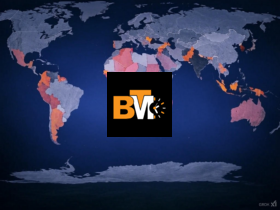Every time you tap your card at checkout or click on a ‘pay now’ button online, a complex web of systems springs into action. Yes, invisible it might be, but for businesses, this process can make or break their customer relationship. A declined transaction does not lose a sale; it is the lost trust that does. That is why it is important for every business online to integrate a robust payment routing system to offer users the right channel. So, whether a customer buys from a store in Singapore or a shopper in Paris subscribes to a streaming platform in California, payment routing chooses the best possible pathway for the transaction to travel from user to merchant. It comes as a relief for many businesses that lose millions annually due to failed transactions, especially the global companies. Dealing with multiple geographies, currencies, and banking partners becomes smooth, making customer purchases more easier. Explore this blog to understand how payment routine boosts sales and transactions for global businesses.
Why Payment Routing is Important for Global Businesses?
Global businesses operate worldwide, spanning customers from various regions. This means every customer might use different payment methods, currencies, and even issuers. For instance, a customer in India may rely on UPI or local networks, while someone in Germany may look for SEPA or Sofort. Therefore, you can neither go with a single integration nor risk payment failures that might lead to fraud. With the help of payment orchestration platforms, businesses can choose the right type of routing based on their targeted customer, the currencies they use, geographies, transaction value, and behaviour.
This is how payment routing actually helps:
- Matching the transaction to the most suitable acquiring bank.
- Optimizing for local regulations and preferred payment methods.
- Reducing latency and transaction costs.
- Improving overall rates, mainly for cross-border payments.
Types of Payment Routing Systems
As mentioned previously, payment routing is not a one size fit all solution. It can be classified into two broad categories based on different business needs, offering flexibility to their global operation. These include:
Static Routing:
Best for small businesses or enterprises in their early stage, which have less complexity and lower transaction volumes. Static routing offers a good starting point for them. This route is simple and follows a predefined rule, with minimal optimization. It does not take into account factors like real-time conditions and performance, as every transaction is routed for a single path based on rules written for it. So, if all transactions from a country are routed to a specific router of the same country, and in case the acquirer faces downtime, the business will face payment failures as well. The static payment routine is clean, but lacks flexibility.
Dynamic Routing:
The data-driven payment routing adapts to changing circumstances and the transaction environment. Dynamic routing identifies and acts based on the real-time scenario it witnesses. It evaluates signals and creates the best path for the transaction to make successful payments. This means, dynamic routing does not run on ifs and buts questions, but instantly adapts to the present condition based on the available card type, issuing bank, customer location, etc. It selects the optimal routine to make every transaction a success for global businesses!
How Payment Routing Optimizes Transaction Success?
Get into the details of payment routing actually is a smart choice for international businesses, helping them:
1. Boosts Authorization Rates
Authorization rates are critical for revenue. By directing a transaction to the acquirer most likely to approve it, which is often one geographically closer to the customer’s issuing bank, businesses increase their chances of success. For example, routing an Indian card transaction to a local acquirer rather than a U.S. based one can reduce declines dramatically.
2. Reduces Cross-Border Friction
Cross-border transactions are more likely to be flagged or rejected. With smart routing rules, you can avoid these risks by partnering with regional acquirers who understand local compliance. This will improve trust between issuers and merchants.
3. Optimizes Costs
Different acquirers charge different fees. Payment routing allows businesses to balance between success rates and cost efficiency by sending transactions through the most cost-effective yet reliable pathways. Over time, this can save enterprises millions in processing fees.
4. Provides Failover Protection
If a primary acquirer experiences downtime or technical issues, routing ensures the transaction is retried instantly with a backup provider. This reduces lost sales opportunities and enhances customer experience.
5. Enables Global Scalability
For businesses scaling internationally, routing provides the infrastructure to adapt quickly. By integrating with multiple acquirers, they can seamlessly serve customers in new markets without constantly redesigning their payment systems.
Wrapping Up!
With digital payments becoming more fragmented due to new wallets, local schemes, and real-time payments, routing has become imperative for every business. It is the future and the present. Meanwhile, the next wave of payment routing will be AI-powered, personalizing customer experience and placing more responsibility on the organisations. Therefore, in global commerce, every successful payment is a victory in itself. And good payment routing gives customers what they want, lets businesses secure revenue, and keeps trust and loyalty maintained. Stay smart, stay one step ahead, today.







Leave a Reply